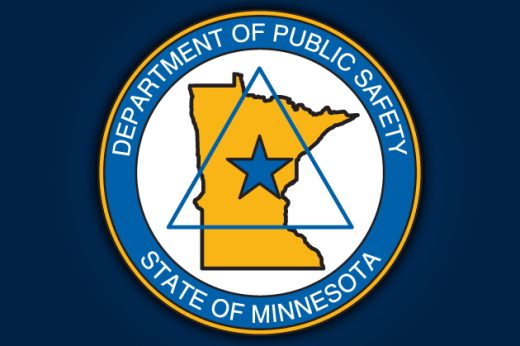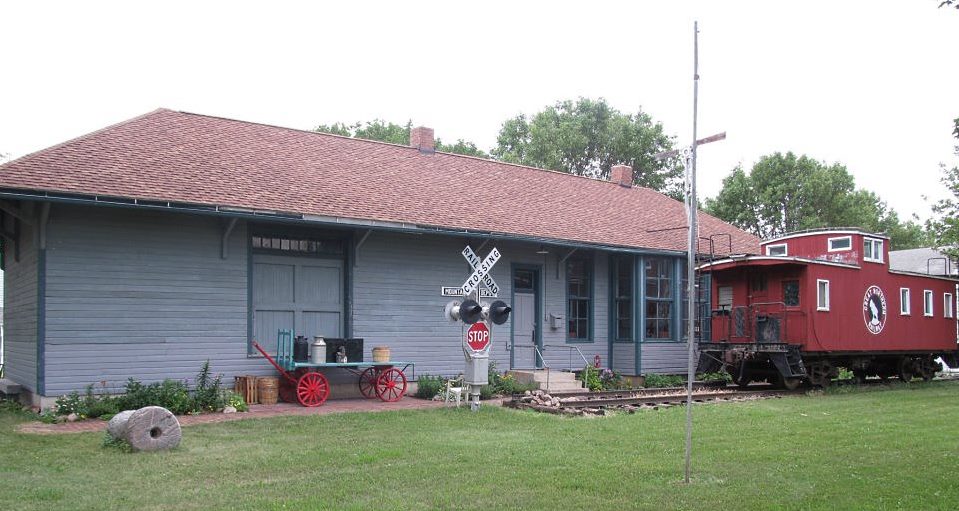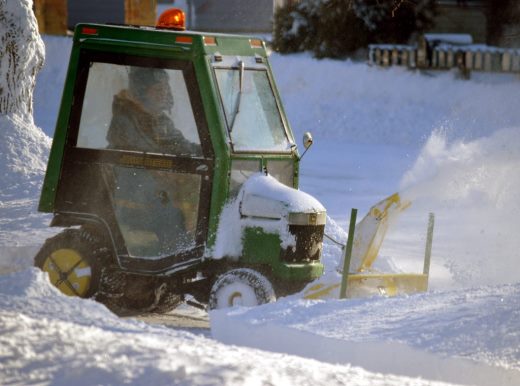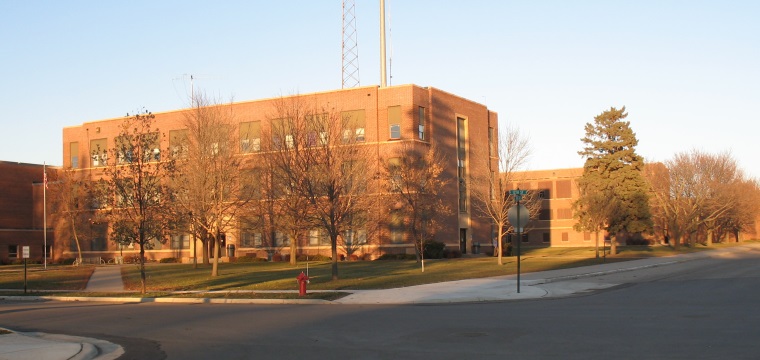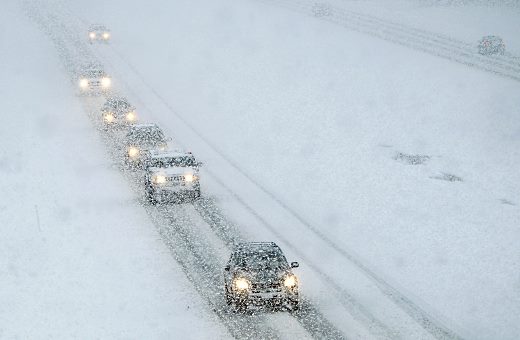Statewide tornado drills this Thursday afternoon, evening

This week (Monday, April 11-Friday, April 15) is Severe Weather Awareness Week in Minnesota. Each year, Homeland Security and Emergency Management (HSEM), a division of the Minnesota Department of Public Safety, in collaboration with the National Weather Service and 16 state and local agencies and organizations sponsors the five days of severe weather awareness in Minnesota.
The week is designed to refresh, remind and educate everyone about the seasonal threats from severe weather and how to avoid them. It’s also a great time to make and practice emergency plans, prepare for weather-related hazards and to either build or refresh an emergency preparedness kit.
The most important part of the week will be two statewide tornado drills on Thursday, April 14, at 1:45 p.m. and 6:55 p.m. (Counties may choose to opt out of the drills if actual severe weather is possible in the area.) Outdoor warning sirens and NOAA (National Oceanic and Atmospheric Administration) Weather Radios will sound in simulated tornado warnings. The first drill is intended for institutions and businesses. The evening drill is intended for second-shift workers and families.
Severe Weather Awareness Week was begun because, according to the National Weather Service (NWS), Minnesota experiences an average of 40 tornadoes per year. In 2012, 37 twisters touched down. A record was set in 2010 with 104 tornadoes across the state. Understanding this threat and knowing what to do when a tornado is approaching can save lives.
Weather warning terms
The National Weather Service uses the words “Advisory,” “Watch” and “Warning” to alert to potentially dangerous weather. Understanding these terms and knowing how to react can be a life saver.
+ Advisory – An advisory is issued when a hazardous weather or hydrologic event is occurring, imminent or likely. Advisories are for less serious conditions than warnings that cause significant inconvenience and if caution is not exercised, could lead to situations that may threaten life or property.
+ Watch – A watch means weather conditions are favorable for dangerous weather to occur. In other words, a “watch” means watch out for what the weather could do, and be ready to act accordingly. You may wish to alter or have a back-up plan for any outdoor activities or travel. For events that come and go quickly, such as severe thunderstorms, tornadoes or flash floods, a watch means that the odds are good for the dangerous weather, but it’s not yet happening. When a severe thunderstorm, tornado or flash flood watch is in effect, it means you should look for signs of dangerous weather and maintain access to the latest information. Sometimes a severe thunderstorm, tornado or flash flood can happen so quickly that warnings can’t be issued in time For longer-lived events, such as floods or winter storms, a watch means that the event isn’t an immediate threat. For either kind of event, a watch means you should keep up with the weather news and be ready to act.
+ Warning – For severe thunderstorms, tornadoes and flash floods, a warning means the weather event is imminent or occurring somewhere in the defined warning area and that people need to take shelter as soon as possible. Outdoor tornado warnings are normally given by sirens. People indoors should listen to radio, television or Weather Radio warnings to find out the latest information. Depending on local policy, other types of weather warnings may also broadcast via sirens. Check with local emergency management officials to learn about local siren activations.
About thunderstorms, hail and lightning
+ Hail – Hail is a product of thunderstorms that causes nearly $1 billion in damage every year. Most hail is about pea-sized. Much of it is the size of baseballs, and it can reach grapefruit-size. Large hail stones fall faster than 100 mph and have been known to kill people.
+ Lightning – Every thunderstorm produces lightning. Lightning kills about 100 Americans each year – more than tornadoes – and causes about 300 injuries. No place outside is safe when thunderstorms are in the area. If you hear thunder, lightning is close enough to strike you. In addition, lightning also often strikes away from where it is raining, occurring as much as 10 miles away from any rainfall. What is called “heat lightning” is actually lightning from a thunderstorm too far away for thunder to be head. However – the storm may may be heading in your direction.When you hear thunder, immediately move to safe shelter – a substantial building with electricity or plumbing or an enclosed, metal-topped vehicle with windows up. Stay in safe shelter at least 30 minutes after you hear the last sound of thunder. When indoors during a lightning storm, stay off corded phones, computers and other electrical equipment that puts one in direct contact with electricity. As well, avoid plumbing, including sinks, baths and faucets. In addition, stay away from windows and doors and stay off porches. Do not lie on concrete floors or lean against concrete walls. If caught outside with no safe shelter anywhere nearby, the following actions may reduce your risk – immediately get off elevated areas such as hills, mountain ridges or peaks; never lie flat on the ground; never shelter under an isolated tree; never use a cliff or rocky overhang for shelter; immediately get out and away from ponds, lakes and other bodies of water and stay away from objects that conduct electricity (barbed wire fences, power lines, wind turbines, etc.). Rubber soles on shoes or rubber tires on a car provide no protection from lightning. A steel frame of a hard-topped vehicle provides some protection – if one is not touching metal. Lightning victims carry no electrical charge and should be attended to immediately.
Flooding and flash floods
Nationally, floods claim nearly 200 lives each year, force 300,000 persons from their homes and result in property damage in excess of $2 billion. In Minnesota, floods kill more people than any other weather event; 15 people have died in floods since 1993.
About 75% of flash-flood deaths occur at night. Half of the victims die in automobiles or other vehicles. Many deaths occur when people drive around road barricades that clearly indicate that the road is washed out ahead.
In 2007, a deadly flood occurred August 18-19 in southeast Minnesota, killing seven people and destroying hundreds of homes and businesses. A state record for rainfall was set at Hokah – 15.1 inches in 24 hours – while several other areas received more than eight inches of rain.
+ Driving safety – Six inches of water will reach the bottom of most passenger cars, causing loss of control and possible stalling. A foot of water will float many vehicles. Two feet of rushing water can carry away most vehicles, including sport utility vehicles (SUVs) and pick-ups.
Tornado safety
+ In a house with a basement – Avoid windows; get in the basement under sturdy protection (a heavy table or work bench) or cover yourself with a mattress or sleeping bag; know where very heavy objects are on the floor above you (pianos, refrigerators, waterbeds, etc.) and do not go under them a they may fall through a weakened floor onto you.
+ In a house with no basement – Avoid windows: go to a small center room in the lowest floor (like a bathroom or closet), under a stairwell or in an interior wall with no windows; crouch as low as possible to the floor, facing down; cover your head with your hands; a bath tub may offer a shell of partial protection; cover yourself with a mattress, blankets, etc. to protect against falling debris in case the roof and ceiling fall.
+ In an apartment, dorm or condo – Immediately get to the lowest level of the building (this could be an underground parking garage or a first-floor apartment); move to the most interior area possible, away from windows; if in a high-rise apartment building, there might not be enough time to get to a lower level so pick a place in the hallway in the center of the building, such as a stairwell, or a closet, bathroom or interior hall without windows; power loss during a tornado storm is common, so avoid elevators and keep a flashlight handy.
+ In an office building, hospital or store – Follow instructions from facility managers. Go directly to an enclosed, windowless area in the center of the building – away from glass and on the lowest floor possible. Then, crouch down and cover your head. Interior stairwells are usually good places to take shelter, and if not crowded, allow you to get to a lower level quickly. Stay off the elevators; you could be trapped in them if the power is lost.
+ In a mobile home – Get out! Even if your home is tied down, you are probably safer outside, even if the only alternative is to seek shelter out in the open. Most tornadoes can destroy even tied-down mobile homes; and it is best not to play the low odds that yours will make it. If your community has a tornado shelter, go there fast. If there is a sturdy permanent building within easy running distance, seek shelter there. Otherwise, lie flat on low ground away from your home, protecting your head. If possible, use open ground away from trees and cars, which can be blown onto you.
+ At a school – Follow the drill! Go to the interior hall or room in an orderly way as you are told. Crouch low, head down, and protect the back of your head with your arms. Stay away from windows and large open rooms like gyms and auditoriums.
+ In a car or truck – Vehicles are extremely dangerous in a tornado. If the tornado is visible, far away, and the traffic is light, you may be able to drive away from its path by moving at right angles to the tornado. Otherwise, park the car as quickly and safely as possible – out of the traffic lanes. Get out and seek shelter in a sturdy building. If in the open country, run to low ground away from any cars (which may roll over on you). Lie flat and face-down, protecting the back of your head with your arms. Avoid seeking shelter under bridges, which can accelerate the wind while offering little protection against flying debris.
+ In the open outdoors – If possible, seek shelter in a sturdy building. If not, lie flat and face-down on low ground, protecting the back of your head with your arms. Get as far away from trees and cars as you can; they may be blown onto you in a tornado.
+ In a shopping mall, large store or stadium – Listen for instructions from building security. Watch for others. Move as quickly as possible to an interior bathroom, storage room or other small enclosed area, away from windows. Move away from any glass.
+ In a church or theater – If possible, move quickly but orderly to an interior bathroom or hallway, away from windows. Crouch face-down and protect your head with your arms. If there is no time to do that, get under the seats or pews, protecting your head with your arms or hands.
Heat waves
From 2000 to 2010, 35 deaths were directly attributable to extreme heat in Minnesota. This count does not include data from 2011 when Minnesota experienced an extreme heat event that broke several records for dew point temperature.
Each year, dozens of children and untold numbers of pets left in parked vehicles die from hyperthermia. Hyperthermia is an acute condition that occurs when the body absorbs more heat than it can handle. Hyperthermia can occur even on a mild day. Studies have shown that the temperature inside a parked vehicle can rapidly rise to a dangerous level for children, pets and even adults. Leaving the windows slightly open does not significantly decrease the heating rate. The effects can be more severe on children because their bodies warm at a faster rate than adults.
To prevent heat-related illness –
+ Drink more fluids (non-alcoholic), regardless of your activity level. Don’t wait until you’re thirsty to drink. Warning: If your doctor generally limits the amount of fluid you drink or has you on water pills, ask how much you should drink while the weather is hot.
+ Don’t drink liquids that contain alcohol or large amounts of sugar as these cause you to lose more body fluid. Also, avoid very cold drinks, because they can cause stomach cramps.
+ Stay indoors and, if possible, stay in an air-conditioned place. If your home does not have air conditioning, go to the shopping mall or public library – even a few hours spent in air conditioning can help your body stay cooler when you go back into the heat. Call your local health department or American Red Cross Chapter to see if there are any heat-relief shelters in your area.
+ Electric fans may provide comfort, but when the temperature is in the high 90s, fans will not prevent heat-related illness. Taking a cool shower or bath, or moving to an air-conditioned place is a much better way to cool off.
+ Wear lightweight, light-colored, loose-fitting clothing.
+ Never leave anyone or any pet in a closed parked vehicle.
+ Anyone can suffer from heat-related illness, but some people are at greater risk. These include infants and young children, people aged 65 or older, people who have a mental illness, and those who are physically ill, especially with heart disease or high blood pressure.
+ Visit at-risk adults at least twice a day and watch them for signs of heat exhaustion or heat stroke. Infants and young children need more frequent attention.
+ If you have to be out in the heat, limit your outdoor activities to morning and evening hours; cut down on exercise, if you must exercise, drink two-to-four glasses of cool, non-alcoholic fluids each hour (a sports beverage can replace the salt and minerals lost in sweat), however if on a low-salt diet, check with a physician before drinking a ports beverage; try to rest often in shady areas and protect yourself from the sun by wearing a wide-brimmed hat (also keeps you cooler) and sunglasses and by putting on sunscreen of SPF 15 or higher (the most effective products say “broad spectrum” or “UVA/UVB protection” on their labels).
The National Weather Service (NWS) places high priority on alerting the public to heat wave hazards. Additionally, the Minnesota Department of Health (MDH) has developed an Extreme Heat Toolkit with communications and public-health planning strategies to prevent heat-related illnesses and deaths. The toolkit is available on MDH’s website here: http://www.health.state.mn.us/divs/climatechange/extremeheat.html.
+ Excessive Heat Outlooks – These are issued when the potential exists for an excessive heat event in the next 3-7 days. An Outlook provides information to those who need considerable lead time to prepare for the event, such as public utility staff, emergency managers and public health officials.
+ Excessive Heat Watches – These are issued when conditions are favorable for an excessive heat event in the next 24-to-72 hours. A Watch is used when the risk of a heat wave has increased but its occurrence and timing is still uncertain. A Watch provides enough lead time so that those who need to prepare can do so, such as cities officials who have excessive heat event mitigation plans.
+ Excessive Heat Warning/Advisories – Warnings/Advisories are issued when an excessive heat event is expected in the next 36 hours. These products are issued when an excessive heat event is occurring, is imminent, or has a very high probability of occurring. The Warning is used for conditions posing a threat to life. An Advisory is for less serious conditions that cause significant discomfort or inconvenience and, if caution is not taken, could lead to a threat to life.
